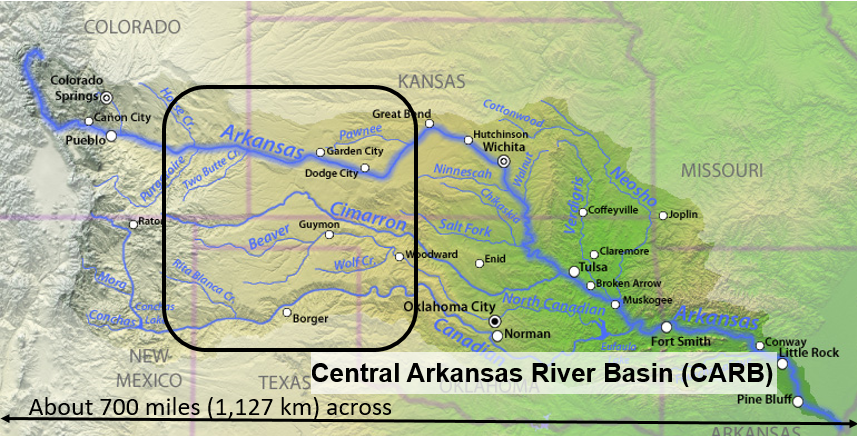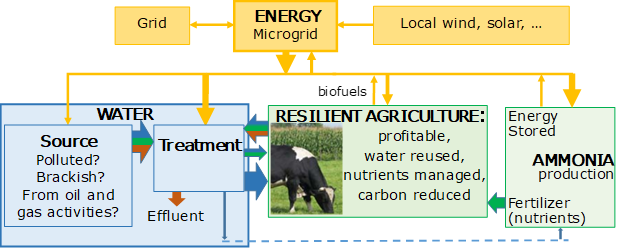About
More About Us

Local renewable energy resources could provide expansive economic opportunities for farmers and rural communities. To address Food, Energy, and Water futures, FEWtures will evaluate coordination of renewable, variable energy with agricultural needs
Renewable energy sources like wind and solar energy depends on the wind blowing and the sun shining; the resulting variations in energy production is a challenge. We expect that developing agriculturally beneficial energy uses that are flexible enough to be coordinated with this variability will reduce costs and provide new business opportunities for rural areas.
The flexibly-scheduled energy demands being evaluated by the FEWtures project are treatment of poor quality water and ammonia production. Ammonia can be used to store energy as a fuel, and as fertilizer. Opportunities for business and community development are explored.
The figure below shows how the goal of resilient agriculture, in which profits are sustained, water is reused, and nutrients are managed, is central to the FEWtures project. To support this goal, we will design new energy microgrid technology needed to manage variable production from renewable-energy resources to power We will explore the economic viability of using this energy to support flexibly-scheduled water treatment and ammonia production that are enabled by new and emerging scientific advances.

Who and where is FEWtures? Faculty at University of Kansas, Kansas State University, Washington State University, Western New England University, University of Montana, and talented staff and students. We will enable local residents and communities in the central Arkansas River basin to economically analyze the selected new business opportunities. The study area is the central part of the Arkansas River basin, which extends from the foothills of Colorado and New Mexico east to include the arid portions of Kansas, Oklahoma, and Texas.
